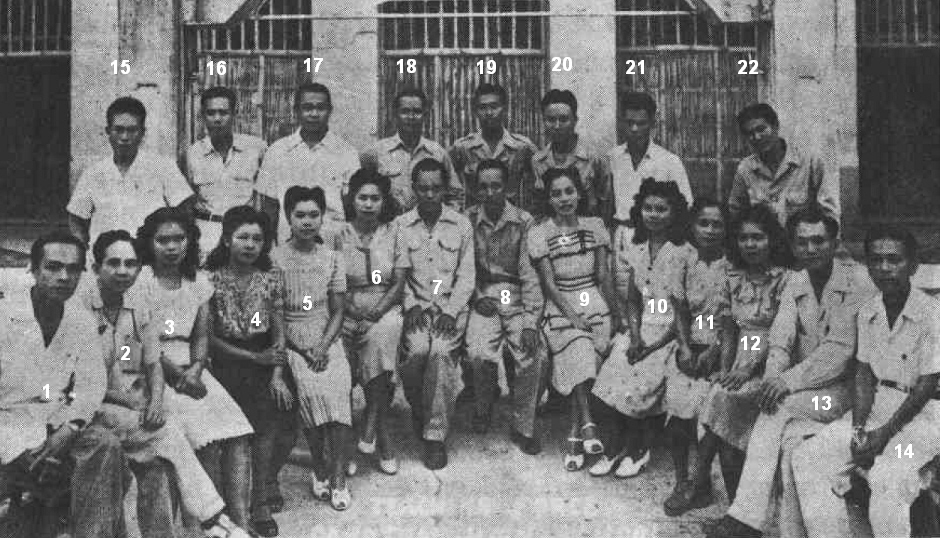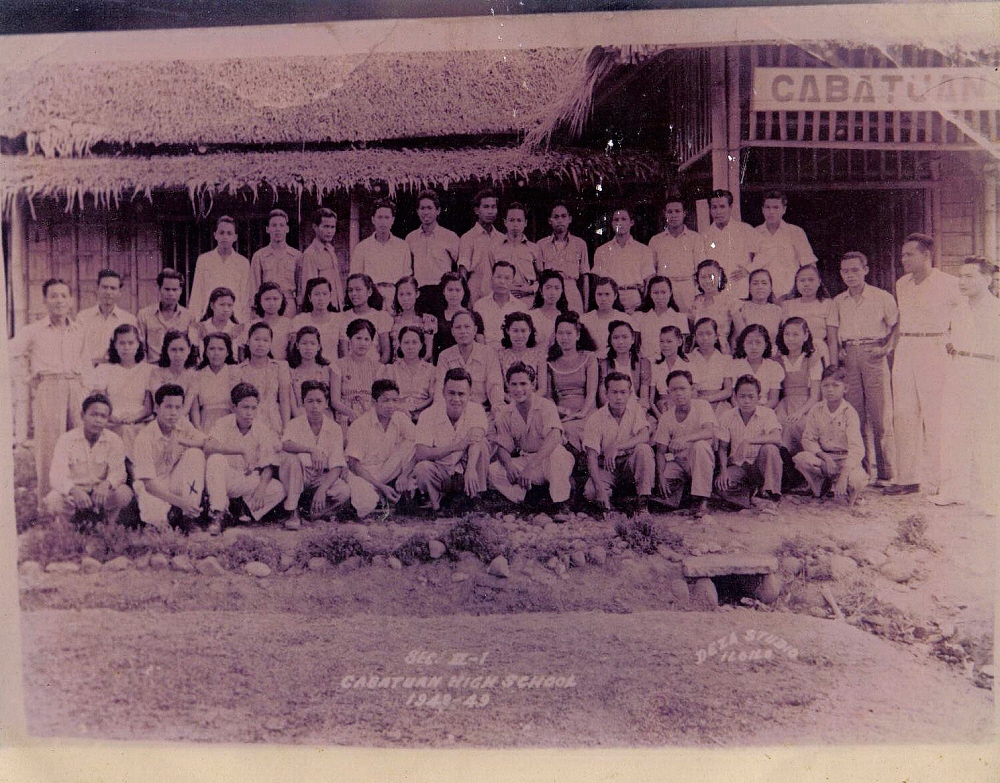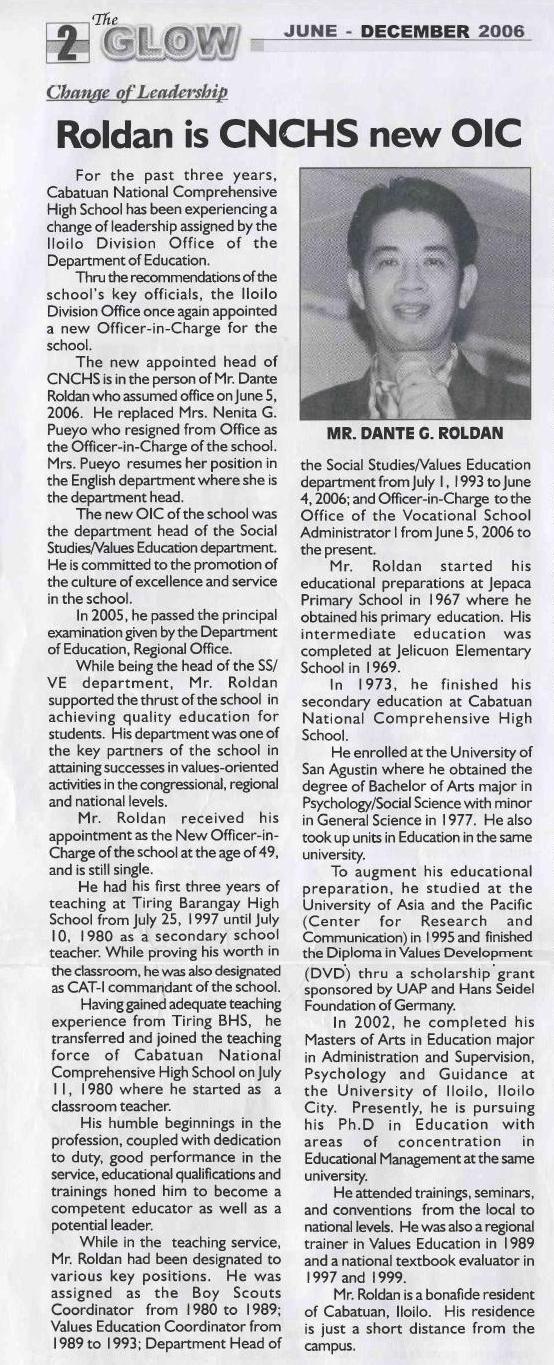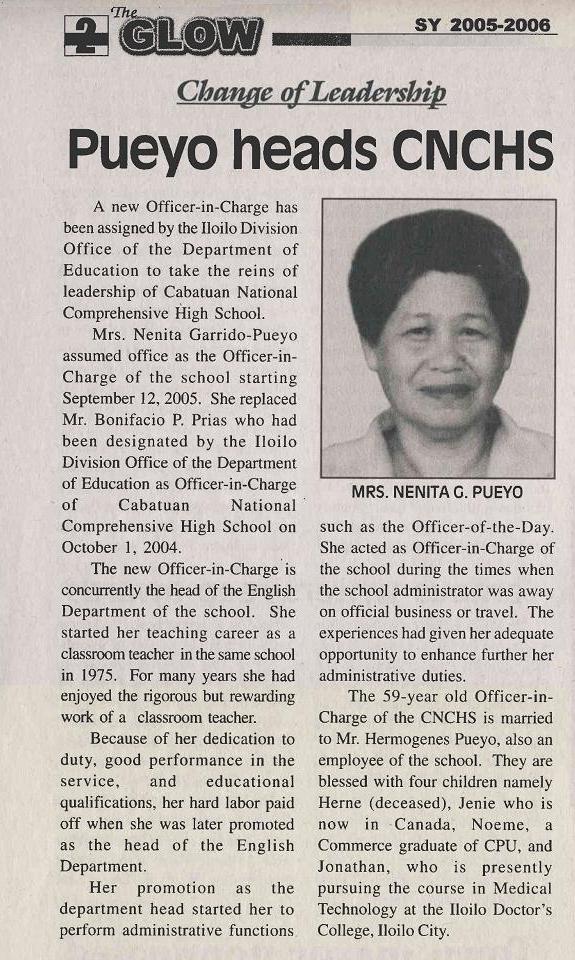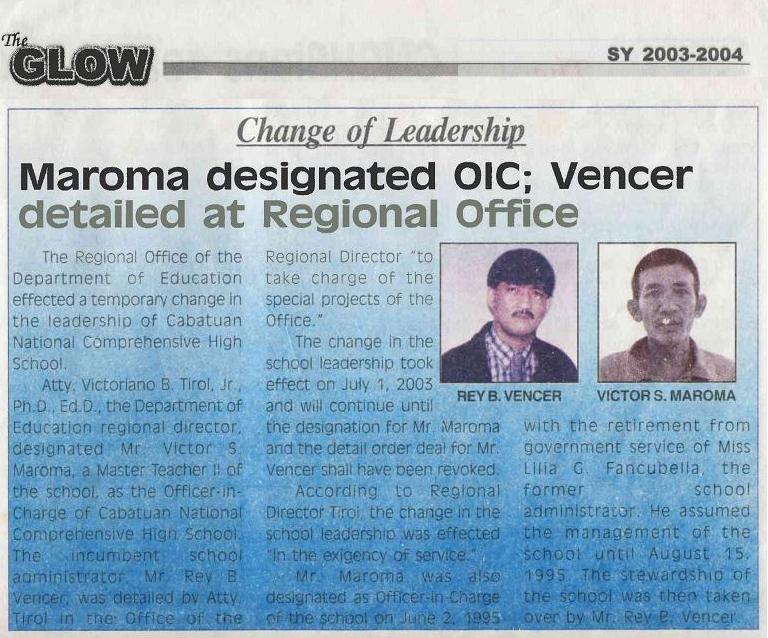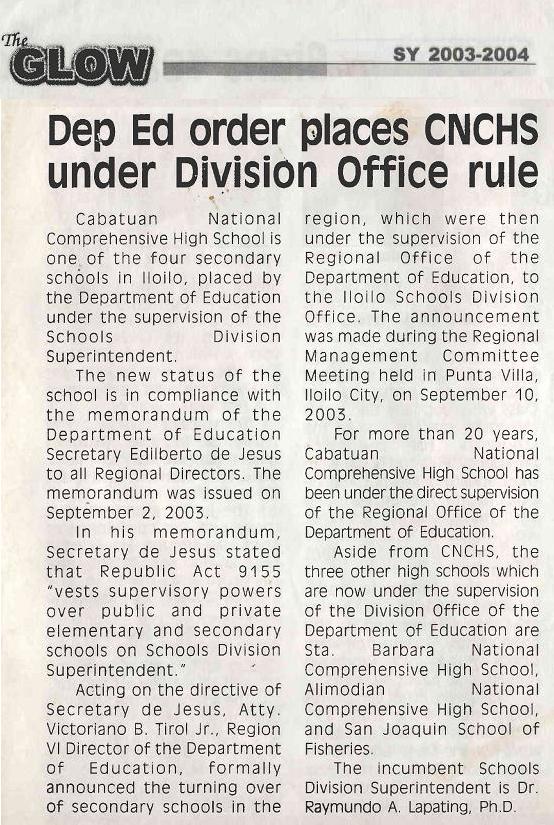HISTORICAL SKETCH
Cabatuan National Comprehensive High School
IN 1944, when the ashes and smoke of World War II completely vanished in thin air, then acting Iloilo governor Patricio V. Confesor initiated a move to open in Cabatuan a branch of Iloilo High School which was then the only high school in the entire province of Iloilo. The move materialized and so in December 1944, the Cabatuan Regional High School was born!
The school offered a refresher course in secondary education. The first graduation was held in June 1945, with Enrique Binayas and Ana Sumagaysay as valedictorian and salutatorian, respectively. The first administrator was Jose Gonzales.
The following school year 1945-46, the school offered complete classes from first to fourth year. Hundreds of students from the town and neighboring towns flocked to the school. The first batch of the formal graduates was headed by Editha Jiloca as valedictorian and Beata Quiñon as salutatorian.
In 1948, the school was renamed Cabatuan National High School. Civic-minded citizens of the town, headed by former Mayors Wenceslao Grio and Pedro Dejecacion, and Glicerio Cerrada, paved the way for the acquisition of the present site of the school. The school site, which is 8.6 hectares, was donated by brothers Benjamin, Constantino and Ariston Vistavilla and former Rep. Patricio Confesor.
On June 21, 1969, the school was nationalized with the passage of Republic Act No. 5544, converting Cabatuan High School to Cabatuan National Comprehensive High School. The law was authored by former Congressman Gloria M. Tabiana of the third congressional district of Iloilo, through the efforts of the Mayor Francisco Tobias.
After one year of administering the school, Jose Gonzales, the first principal, was transferred to his hometown Lambunao. A new administrator, Jose Gorriceta, took over the principalship of the school. His five-year administration of the school ended in 1951.
From 1951-1968, Tomas Torreblanca discharged the duties of the school principal. During his term, he was able to change the old nipa building to wooden building salvaged from the demolished buildings of Iloilo High School.
With the retirement of Tomas Torreblanca, Remedios Miranda, the assistant principal, took over. But her administration lasted only for three months because she was promoted to another school.
With Miranda’s promotion, Lilia G. Fancubela, then the guidance coordinator, was named teacher-in-charged designate of the school. She acted as principal from October 1 to June 1970.
During her incumbency, Miss Fancubela effected the leveling of the ground in front of the administration building. She started the fencing of the school.
On July 1, 1970 a new administrator was assigned in school - Jose Ledesma. He efficiently managed the school until his retirement on March 30, 1971, after which Anita Jamero assumed the stewardship of the school until June 30 following her promotion.
It was during the administration of Crispin Vacante that the physical set-up of the school remarkably changed. A number of buildings mushroomed on the school campus and several improvements had been effected. His administration ended with his death on January 1, 1980.
Immediately, Lucia T. Murga, assistant principal, was designated officer-in-charge of the school. Despite the short administration that ended on March 1980, she effected some improvements in school.
On March 7, 1980, a new administrator took over the helm of CNCHS, Florentino P. Gonzales. Like his predecessors, he exerted all efforts to improve the school physically and academically. His term expired on August 15, 1982.
Lilia G. Fancubela made her “sentimental return” to the school on August 16, 1982. The “balik-paaralan” administrator buckled down to work, obsessed with the desire to give greater fame and honor to the school.
During her 14-year incumbency as the school administrator, she effected a lot of improvements in the physical appearance and facilities of the school. Through her efforts, an imposing administration building was constructed. Annexed to both sides of the building are two other buildings housing the English and Math classes. She completed the construction of Social Studies building.
With the help of the PTA, she finally solved the water problem of the school by securing the donation by the family of the late Leodegario Cuarte of a lot where the source of water is located. Again through the financial assistance of the PTA, she effected the construction of a 3-room building now used for agricultural classes. Annexed to the building is another 3-room building constructed out of school funds.
Improving further the physical set-up of the school, she effected the repair of the canteen, the H. E. building, a portion of the old quadrangle building now utilized as Values Education building, and the relocation of the a new building housing the Supply Office and stock room.
Through her coordination with the Alumni Association and the PTA of the school, the fence of the school has been made permanent. Through a capital outlay, she effected the construction of a Filipino building designed to be a double storey. The first floor composed of seven classrooms is utilized for Filipino classes.
Another modern and imposing building constructed during Fancubela’s incumbency is the P4.6-million, two-storey Science building funded by the United State Agency for International Development through the Economic Support Fund. Started was the construction of a two-room Science laboratory building funded by the Department of Science and Technology.
One of Fancubela’s major achievements was the titling of the 8.6-hectare site of the school.
With Fancubela’s on June 1, 1995, Victor Maroma was designated officer-in-charge. During his stewardship of the school for two months and 13 days, Maroma introduced some improvements in the physical and academic aspects of the school.
On august 16, 1995 the Regional Office of DECS appointed a new school administrator –Rey B. Vencer. Prior to his new assignment, Vencer was the DECS Regional Officer, supervisor of Math. Weeks after assumption of office, he formulated a Vision and Mission Statement to provide direction for the school.
During his administration, Vencer facilitated the completion of the Engineering Science Education Project building funded by DOST. Adjacent to the 2-Science Laboratory building is a 2-classroom building constructed through the pork barrel funds of Iloilo Rep. Licurgo Tirador and Senate President Ernesto Maceda.
For having been evaluated as one of the top Science and Technology-oriented high school in the Philippines, CNCHS became a recipient of 15 computer units. The new facilities housed in a computer room furnished by the PTA and the Alumni Association of the school are now used for the practicum of students taking up computer education.
CNCHS has carved a name of regional and national magnitude. This record of the school has been established through the years due to the collective efforts of all school personnel, government agencies, and non-government organizations in town.
Source: Alumni Homecoming 2001 Souvenir Program
|
|
